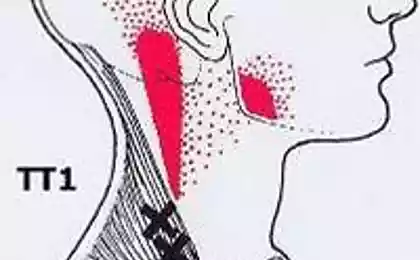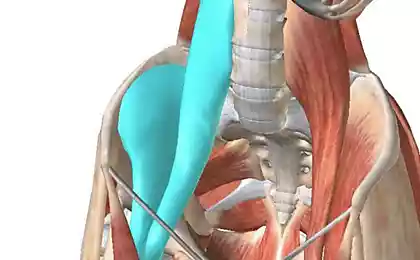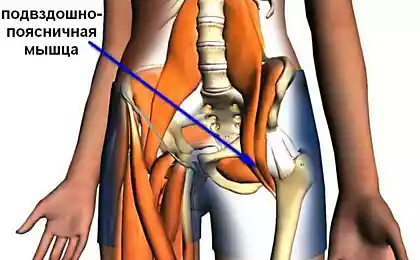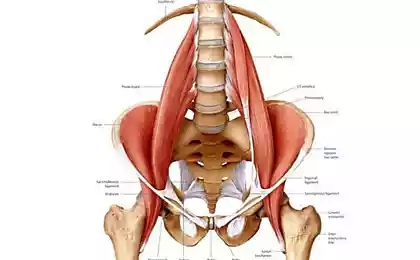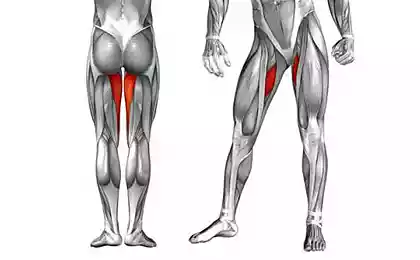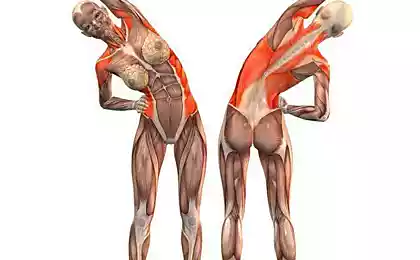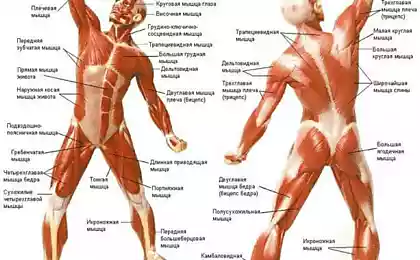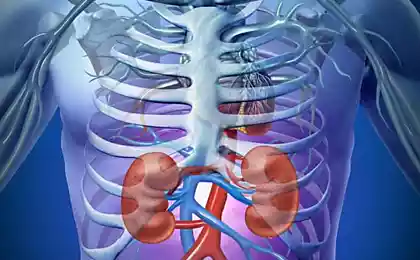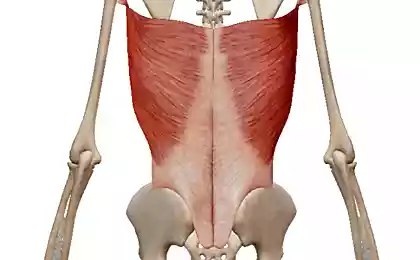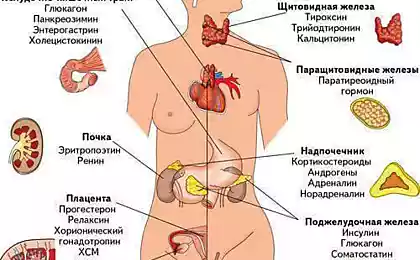351
Lumbar muscle - womb for the kidneys
The misunderstanding of the role of the lumbar muscle is not surprising. The very process of naming these muscles that connect the upper body to the lower body contains a series of errors spanning four centuries.
Long before Hippocrates began using the modern Latin term “psoa,” the anatomists of ancient Greece called these muscles “kidney womb” because of their physical relationship with these organs.
In the 17th century, the French anatomist Riolanus made a grammatical error that still exists today, naming the two lumbar muscles as one "psoas" instead of the proper Latin "psoai" (Diab, 1999).
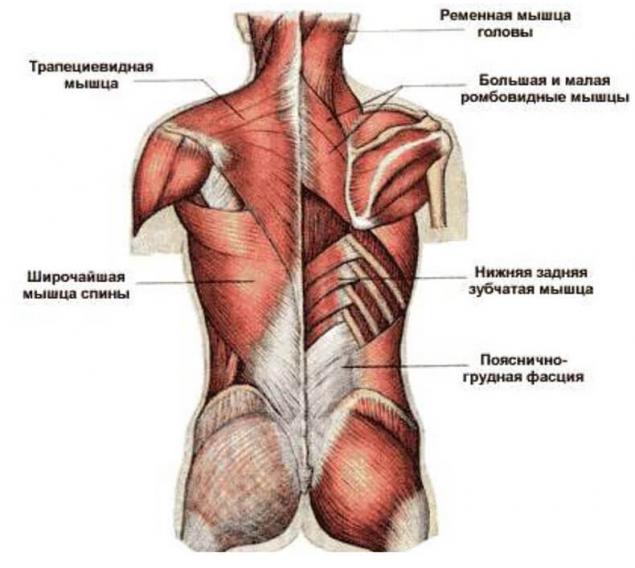
This may affect our perception of muscles as team players rather than as individual muscles adapting to our asymmetrical habits. Dr. John Basmajian, the father of electromyographic (EMH) science, contributed to the misunderstanding by claiming that the lumbar and iliac muscles function inseparably because they share a common lower attachment.
His opinion led to the widespread use of the term “iliopsoas” (ilioplum), depriving each of the muscles of individual characteristics, and provoked a precedent to measure the EMG of the iliac muscle, rather than the deeper and more difficult-to-reach lumbar muscle. This whole story helps to understand the reasons for the widespread misconceptions about the real role of the lumbar muscle.
ANATOMIC REVIEW
When we discuss the lumbar muscle, it should be noted that there are two lumbar muscles - large and small, but only half of the population has the latter. This article is dedicated to the large lumbar muscle.
Despite the fact that the large lumbar looks like one long multijoint muscle, the dissection shows a slightly different situation. The abdomen of each muscle contains (on average) 11 bundles of muscle fibers with separate attachment to the bones, where the most superficial bundles are attached to the lower thoracic vertebra, and the rest are lower, in different places of the lumbar region, and at the bottom they are attached to the femur.
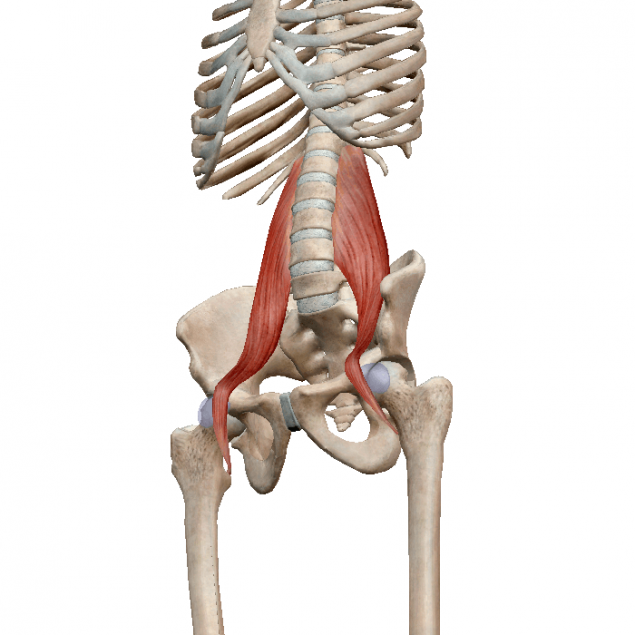
In addition to attaching to the transverse processes of some vertebrae, the lumbar muscle is attached directly to each intervertebral disc of the lumbar region. The total number of attachments of the lumbar muscles is 22: one to each hip and 20 attachments to the spine.
The lumbar muscle has two layers - superficial and deep. Between the layers there is a lumbar plexus consisting of a large number of nerves that innervate the transverse and oblique muscles of the abdomen, the pelvic floor, the deep thigh rotators and most femoral muscles (Kirshmair et al, 2008). Due to the large number of attachments, the lumbar muscle covers many joints and nerve networks, so it is not surprising that it can be the culprit of many injuries.
Lumbar muscle mechanics
In light of the information about attachment points, questions arise: Does the lumbar muscle flex the thigh? Or does it move the spine? Or maybe she does both.
Biomechanics always try to build a picture based on the “presumed” action, given the health of the joints, the levers and the force produced. Numerous connections to the spine imply that the main role of the lumbar muscle is to provide some form of spinal movement.
But testing this hypothesis shows that the angles of attachments do not allow sufficient force to bend to the side. Remember the rise of the corps while lying in school (old school!) from the National Fitness Testing program (now known as the President’s Challenge Program)?
In movement similar to the lifting of the trunk (which, oddly enough, are still included in the protocol), the lumbar muscle simultaneously extends the upper vertebrae and flexes the lower vertebrae, creating a shifting force in the lumbar vertebrae (one vertebra slides relative to the other), and also creates a significant compression load (Bogduk, Pearcy & Hadfield, 1992) – an undesirable movement for long-term back health.
Studies show that the lumbar muscle plays an active role in thigh flexion, but compared to the iliac muscle, the lumbar muscle stabilizes the spine more. (not allowing the vertebrae to rotate in the frontal plane) than produces the movement of the leg. Finally, multiple attachment requires sufficient ability to lengthen the lumbar muscle to allow the spine, pelvis and hips to move freely and naturally without pain or injury.
Sedentary life image and lumbar muscle
If you’ve ever seen a triathlete transition from cycling to running, you can imagine how long your lumbar muscle stays in a shortened state affects your ability to walk upright.
In a slightly less extreme situation, hours (and many more hours) spent sitting affect the lumbar muscle’s ability to stretch to its maximum length – a length that allows you to stand flat and, probably more importantly, lengthen when walking.
If you count the number of clients who go from eight hours of sitting in the workplace to “fitness” activity that additionally predisposes the lumbar muscle to shortening (exercise bike, stair-trainer, sitting-up exercise), then you should not be surprised that people who perform exercises have so many problems with the lower back, pelvis and hips.

How does a shortening of the lumbar muscle look?
Specialists, noticing excessive curvature of the lumbar spine, often conclude that the pelvis is tilted forward in the client. This form of postural evaluation is erroneous, since it is not supported by objective data on the position of the skeleton, in particular, the origin of the curve. Excessive spinal extension or pelvic tilt forward is not necessarily evidence of a shortened lumbar muscle.
Instead, there is a special curve created by the displacement of the upper lumbar vertebrae in combination with the extension and displacement and bending of the lower vertebrae. It looks like an excessive bending, with one exception being a bone sign: the chest.
Lumbar muscle evaluation
Due to the fact that the lumbar muscle can move the spine forward, it is very often possible to see "bulging ribs" when the muscle is shortened. It is difficult to assess this in a standing position, since many people compensate for the shortening of the lumbar muscle with a slight flexion of the hip joints and knees, "weakening the lumbar line." For an objective assessment, use the position lying on your back.
Start working with the client in a sitting position with straightened legs. The four-head muscles should be completely relaxed, and the back of the thigh should touch the floor. Stop the client when tilting back when the lower thigh surface rises from the floor. At this point, support your client under the head and shoulder blades, leaving space for lowering the ribs to the floor. The height of support depends on the tension of the lumbar muscle.
Ideally, you should be able to lie on the floor with a "neutral" skeletal position. A shortened lumbar muscle will lift the thigh or lower ribs from the floor. This assessment is a correctional position. If you find raised ribs, ask the client to relax until the lower ribs are on the floor. When working with a client, it is necessary to gradually reduce the height or position at which support is needed.
Suspended or explanatory?
Lifting the legs lying on the back is a fairly common exercise in treatment and training. Ideally, lifts should strengthen the legs (the straight muscle of the thigh, iliac, tailor, straining the wide fascia of the thigh and partially leading muscles), but most people actually do the exercise with the lumbar muscles instead of the muscles that provide stabilization of the knee. How can you explain it to them?
Many engaged in lifting the legs at the same time deflect the pelvis back. While technically it remains a “leg lift”, the movement is due to the bending of the lumbar, not the hips, which increases the load on the intervertebral discs, does not improve the stabilization of the knee and further shortens the lumbar muscle.
Learn to lift your legs in the best way:
The client lies on his back, one leg bent at the knee (stop on the floor), and the other, fully straightened, on the floor.
Before starting the exercise, it is necessary to place the pelvis in a neutral position (the anterior upper iliac axis and pubic symphysis - in one horizontal plane). Ask the client to raise the straight leg to the height of the opposite knee without moving the pelvis.
Restoration of the lumbar muscle balance: what to increase and what to reduce
Perhaps never before have people been more informed by the health team regarding questions about the connection of the mysterious lumbar muscle to the lower back, hips, groin and pelvic floor. Therefore, for specialists in the field of movement it is necessary to understand the anatomical features and biomechanical action of the lumbar muscle, as well as ways to modify exercises in the preparation of programs to reduce the risk of future problems.
It is not surprising that people involved in sports and fitness so often have problems with the lumbar muscle. By performing a quick kinematic evaluation of the most preferred types of exercise, you will find that most of them have hip flexion.
Tracking and calculating the usual articular angles of customers during the day, you will probably find long periods (think hours!) in the sitting position – at work, in the car, on the couch. If you combine the sitting position with the time you sit when you exercise, you find that the lumbar muscle didn't have a chance with all these hip flexions!
Despite the fact that it may seem logical to balance the habit of constant bending with the extension of the hip, this is not the best recommendation, since it slightly reduces the disproportionate tension of the lumbar muscle, but simply temporarily redistributes it.
Instead of simply adding extension exercises, consider replacing common hip-bending activities, such as a treadmill or exercise bike, with movements that include more hip extensions, such as roller skating or skiing.
Recommend clients to reduce sitting time by using a standing position and reduce sitting exercise (bicycles, exercise machines, etc.). Consider adding exercises to stretch the lumbar muscles from yoga (fall pose or warrior), paying special attention to the position of the ribs. Protrusion of the ribs while performing these exercises reduces their effectiveness for lengthening the lumbar muscle. Ask customers to lower their lower ribs until they are level with the pelvis to keep muscle attachments under control.
ANNEX. Lumbar muscle and beige path
Walking remains one of the most popular types of motor activity, including on the treadmill. However, when walking on a treadmill, the natural gait pattern changes in the direction of increased flexion, which means greater tension of the lumbar muscle.
Read also:4 best exercises for a relief press
You need to know! The most harmful components of shampoo
Like a spaceship that has to push off the ground to take off, our body needs to push back to move forward. Since the treadmill is moving in the opposite direction, our legs require much less force to repel. This requires us to raise our legs in front of us to prevent us from falling forward. Therefore, despite the fact that walking kilometers on a treadmill can be convenient, the mechanics of this method of walking can aggravate the situation. published
P.S. And remember, just changing our consumption – together we change the world!
Join us on Facebook, VKontakte, Odnoklassniki
Source: vk.com/wall178168887?offset=40&w=wall178168887_882%2Fall
Long before Hippocrates began using the modern Latin term “psoa,” the anatomists of ancient Greece called these muscles “kidney womb” because of their physical relationship with these organs.
In the 17th century, the French anatomist Riolanus made a grammatical error that still exists today, naming the two lumbar muscles as one "psoas" instead of the proper Latin "psoai" (Diab, 1999).

This may affect our perception of muscles as team players rather than as individual muscles adapting to our asymmetrical habits. Dr. John Basmajian, the father of electromyographic (EMH) science, contributed to the misunderstanding by claiming that the lumbar and iliac muscles function inseparably because they share a common lower attachment.
His opinion led to the widespread use of the term “iliopsoas” (ilioplum), depriving each of the muscles of individual characteristics, and provoked a precedent to measure the EMG of the iliac muscle, rather than the deeper and more difficult-to-reach lumbar muscle. This whole story helps to understand the reasons for the widespread misconceptions about the real role of the lumbar muscle.
ANATOMIC REVIEW
When we discuss the lumbar muscle, it should be noted that there are two lumbar muscles - large and small, but only half of the population has the latter. This article is dedicated to the large lumbar muscle.
Despite the fact that the large lumbar looks like one long multijoint muscle, the dissection shows a slightly different situation. The abdomen of each muscle contains (on average) 11 bundles of muscle fibers with separate attachment to the bones, where the most superficial bundles are attached to the lower thoracic vertebra, and the rest are lower, in different places of the lumbar region, and at the bottom they are attached to the femur.

In addition to attaching to the transverse processes of some vertebrae, the lumbar muscle is attached directly to each intervertebral disc of the lumbar region. The total number of attachments of the lumbar muscles is 22: one to each hip and 20 attachments to the spine.
The lumbar muscle has two layers - superficial and deep. Between the layers there is a lumbar plexus consisting of a large number of nerves that innervate the transverse and oblique muscles of the abdomen, the pelvic floor, the deep thigh rotators and most femoral muscles (Kirshmair et al, 2008). Due to the large number of attachments, the lumbar muscle covers many joints and nerve networks, so it is not surprising that it can be the culprit of many injuries.
Lumbar muscle mechanics
In light of the information about attachment points, questions arise: Does the lumbar muscle flex the thigh? Or does it move the spine? Or maybe she does both.
Biomechanics always try to build a picture based on the “presumed” action, given the health of the joints, the levers and the force produced. Numerous connections to the spine imply that the main role of the lumbar muscle is to provide some form of spinal movement.
But testing this hypothesis shows that the angles of attachments do not allow sufficient force to bend to the side. Remember the rise of the corps while lying in school (old school!) from the National Fitness Testing program (now known as the President’s Challenge Program)?
In movement similar to the lifting of the trunk (which, oddly enough, are still included in the protocol), the lumbar muscle simultaneously extends the upper vertebrae and flexes the lower vertebrae, creating a shifting force in the lumbar vertebrae (one vertebra slides relative to the other), and also creates a significant compression load (Bogduk, Pearcy & Hadfield, 1992) – an undesirable movement for long-term back health.
Studies show that the lumbar muscle plays an active role in thigh flexion, but compared to the iliac muscle, the lumbar muscle stabilizes the spine more. (not allowing the vertebrae to rotate in the frontal plane) than produces the movement of the leg. Finally, multiple attachment requires sufficient ability to lengthen the lumbar muscle to allow the spine, pelvis and hips to move freely and naturally without pain or injury.
Sedentary life image and lumbar muscle
If you’ve ever seen a triathlete transition from cycling to running, you can imagine how long your lumbar muscle stays in a shortened state affects your ability to walk upright.
In a slightly less extreme situation, hours (and many more hours) spent sitting affect the lumbar muscle’s ability to stretch to its maximum length – a length that allows you to stand flat and, probably more importantly, lengthen when walking.
If you count the number of clients who go from eight hours of sitting in the workplace to “fitness” activity that additionally predisposes the lumbar muscle to shortening (exercise bike, stair-trainer, sitting-up exercise), then you should not be surprised that people who perform exercises have so many problems with the lower back, pelvis and hips.

How does a shortening of the lumbar muscle look?
Specialists, noticing excessive curvature of the lumbar spine, often conclude that the pelvis is tilted forward in the client. This form of postural evaluation is erroneous, since it is not supported by objective data on the position of the skeleton, in particular, the origin of the curve. Excessive spinal extension or pelvic tilt forward is not necessarily evidence of a shortened lumbar muscle.
Instead, there is a special curve created by the displacement of the upper lumbar vertebrae in combination with the extension and displacement and bending of the lower vertebrae. It looks like an excessive bending, with one exception being a bone sign: the chest.
Lumbar muscle evaluation
Due to the fact that the lumbar muscle can move the spine forward, it is very often possible to see "bulging ribs" when the muscle is shortened. It is difficult to assess this in a standing position, since many people compensate for the shortening of the lumbar muscle with a slight flexion of the hip joints and knees, "weakening the lumbar line." For an objective assessment, use the position lying on your back.
Start working with the client in a sitting position with straightened legs. The four-head muscles should be completely relaxed, and the back of the thigh should touch the floor. Stop the client when tilting back when the lower thigh surface rises from the floor. At this point, support your client under the head and shoulder blades, leaving space for lowering the ribs to the floor. The height of support depends on the tension of the lumbar muscle.
Ideally, you should be able to lie on the floor with a "neutral" skeletal position. A shortened lumbar muscle will lift the thigh or lower ribs from the floor. This assessment is a correctional position. If you find raised ribs, ask the client to relax until the lower ribs are on the floor. When working with a client, it is necessary to gradually reduce the height or position at which support is needed.
Suspended or explanatory?
Lifting the legs lying on the back is a fairly common exercise in treatment and training. Ideally, lifts should strengthen the legs (the straight muscle of the thigh, iliac, tailor, straining the wide fascia of the thigh and partially leading muscles), but most people actually do the exercise with the lumbar muscles instead of the muscles that provide stabilization of the knee. How can you explain it to them?
Many engaged in lifting the legs at the same time deflect the pelvis back. While technically it remains a “leg lift”, the movement is due to the bending of the lumbar, not the hips, which increases the load on the intervertebral discs, does not improve the stabilization of the knee and further shortens the lumbar muscle.
Learn to lift your legs in the best way:
The client lies on his back, one leg bent at the knee (stop on the floor), and the other, fully straightened, on the floor.
Before starting the exercise, it is necessary to place the pelvis in a neutral position (the anterior upper iliac axis and pubic symphysis - in one horizontal plane). Ask the client to raise the straight leg to the height of the opposite knee without moving the pelvis.
Restoration of the lumbar muscle balance: what to increase and what to reduce
Perhaps never before have people been more informed by the health team regarding questions about the connection of the mysterious lumbar muscle to the lower back, hips, groin and pelvic floor. Therefore, for specialists in the field of movement it is necessary to understand the anatomical features and biomechanical action of the lumbar muscle, as well as ways to modify exercises in the preparation of programs to reduce the risk of future problems.
It is not surprising that people involved in sports and fitness so often have problems with the lumbar muscle. By performing a quick kinematic evaluation of the most preferred types of exercise, you will find that most of them have hip flexion.
Tracking and calculating the usual articular angles of customers during the day, you will probably find long periods (think hours!) in the sitting position – at work, in the car, on the couch. If you combine the sitting position with the time you sit when you exercise, you find that the lumbar muscle didn't have a chance with all these hip flexions!
Despite the fact that it may seem logical to balance the habit of constant bending with the extension of the hip, this is not the best recommendation, since it slightly reduces the disproportionate tension of the lumbar muscle, but simply temporarily redistributes it.
Instead of simply adding extension exercises, consider replacing common hip-bending activities, such as a treadmill or exercise bike, with movements that include more hip extensions, such as roller skating or skiing.
Recommend clients to reduce sitting time by using a standing position and reduce sitting exercise (bicycles, exercise machines, etc.). Consider adding exercises to stretch the lumbar muscles from yoga (fall pose or warrior), paying special attention to the position of the ribs. Protrusion of the ribs while performing these exercises reduces their effectiveness for lengthening the lumbar muscle. Ask customers to lower their lower ribs until they are level with the pelvis to keep muscle attachments under control.
ANNEX. Lumbar muscle and beige path
Walking remains one of the most popular types of motor activity, including on the treadmill. However, when walking on a treadmill, the natural gait pattern changes in the direction of increased flexion, which means greater tension of the lumbar muscle.
Read also:4 best exercises for a relief press
You need to know! The most harmful components of shampoo
Like a spaceship that has to push off the ground to take off, our body needs to push back to move forward. Since the treadmill is moving in the opposite direction, our legs require much less force to repel. This requires us to raise our legs in front of us to prevent us from falling forward. Therefore, despite the fact that walking kilometers on a treadmill can be convenient, the mechanics of this method of walking can aggravate the situation. published
P.S. And remember, just changing our consumption – together we change the world!
Join us on Facebook, VKontakte, Odnoklassniki
Source: vk.com/wall178168887?offset=40&w=wall178168887_882%2Fall

